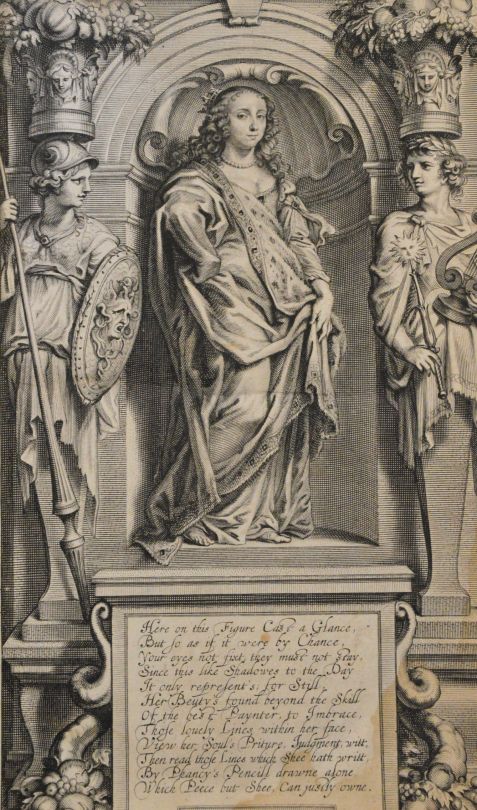
By Danielle Dutton
Once, at the palace, the Count of Grammont said to King Charles II that he’d just been “stopped by the devil of a phantom in masquerade… It is worthwhile to see her dress; for she must have at least sixty ells of gauze and silver tissue about her, not to mention a sort of pyramid upon her head, adorned with a hundred thousand baubles.” To which the king replied: “I bet that it is the Duchess of Newcastle.” It was not. Yet the exchange shows that Margaret Cavendish was notorious for her fashion sense—no less than the king had taken note! And while the woman the count had run into was actually wearing it as a joke, still the implication that Margaret would wear such a fantastical get-up to the palace freed me to dress her with a great degree of imaginative abandon in my novel Margaret the First.
On the book’s cover, gorgeously designed by Strick&Williams with a painting by June Glasson, you can see Margaret wearing one such gown, designed to look like the forest floor, “like glittering yellow wood moss and starry wood anemone and deep-red Jew’s-ear bloom.” When I first saw the cover art, I flipped: there was the gown I’d imagined, there was Margaret Cavendish all dressed up.
“Clothes,” Virginia Woolf writes in her sartorially rich Orlando, have “more important offices than merely to keep us warm; they change our view of the world and the world’s view of us.” Margaret Cavendish understood this very well. She delighted in costumes, designed her own gowns, wore pink ribbons up and down her arms when no one else wore ribbons, feathers in her hat when no one was wearing feathers. She sometimes stepped out in men’s apparel: riding breeches, a philosopher’s cap. And once—to great scandal—she attended the theater in a topless gown, her nipples painted red. Margaret never expected to fit in. She never did, no less in her desire to be an author than in her sense of style. “I had rather appear worse in singularity,” she wrote, “than better in the mode.”
Personally, I’ve never quite known what to do with clothes other than put them on. Part of the problem, I think, is that I internalized (due to some native deficiency? a lazy disposition?) a particular quality of my hippie-leaning California upbringing: that what mattered wasn’t what you wore so much as the amount of sun-kissed skin it showed, how rosy your lips, how shiny your hair. I wandered around barefoot in cut-off jeans and braless in tank tops well into my twenties. It wasn’t until I moved to Chicago for graduate...
You have reached your article limit
Sign up for a digital subscription and continue reading all new issues, plus our entire archives, for just $1.50/month.
Already a subscriber? Sign in




